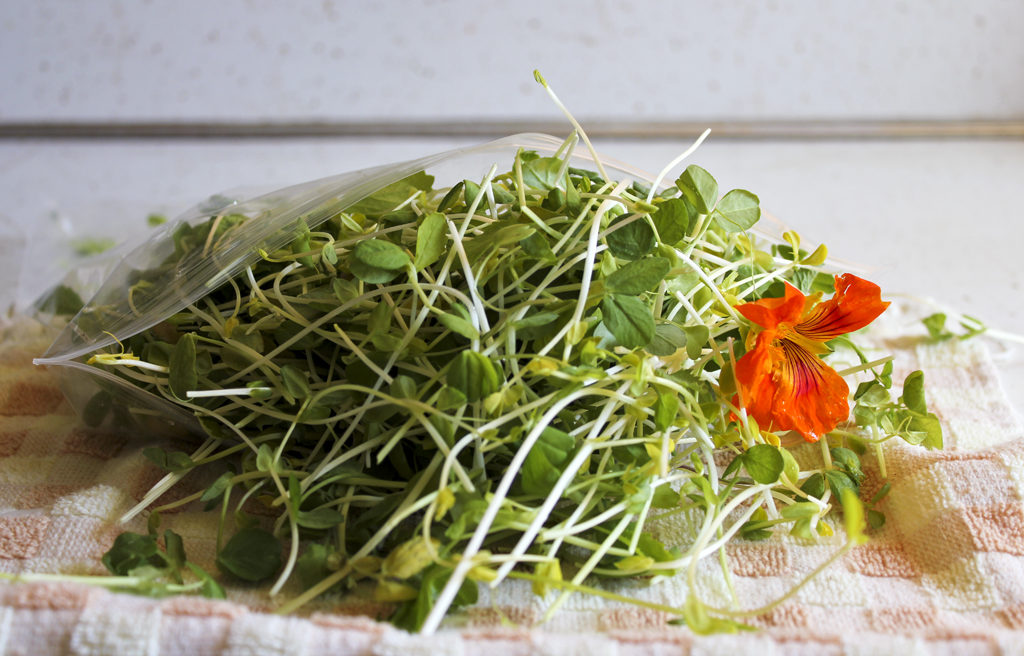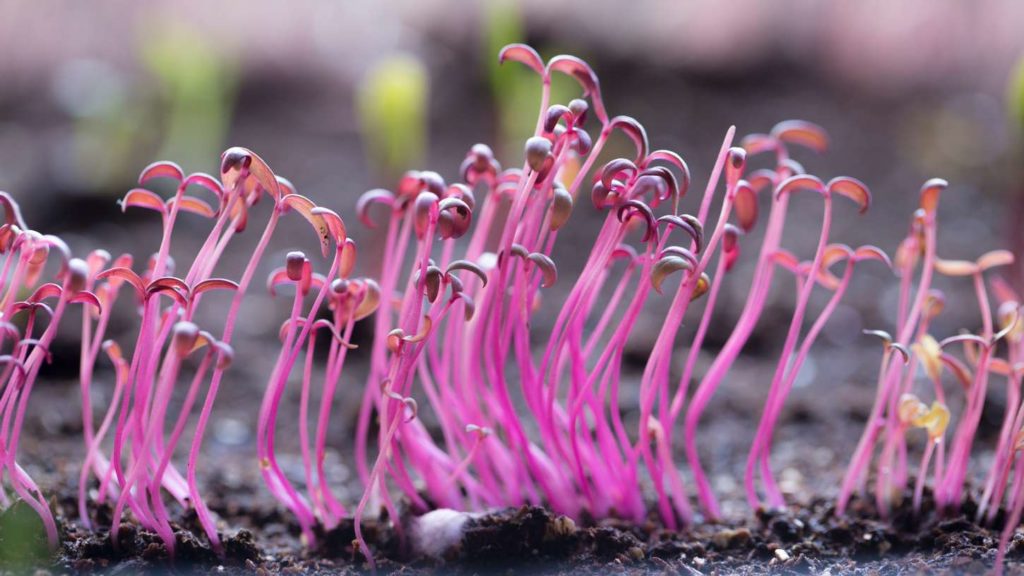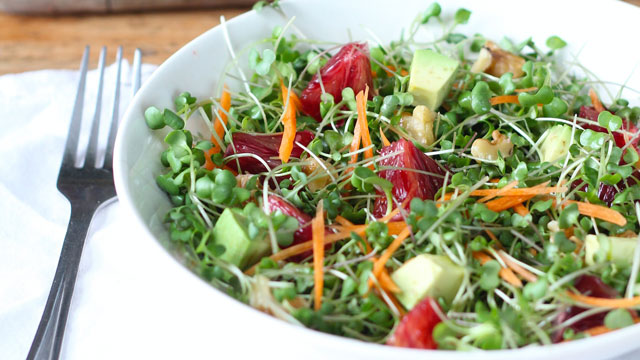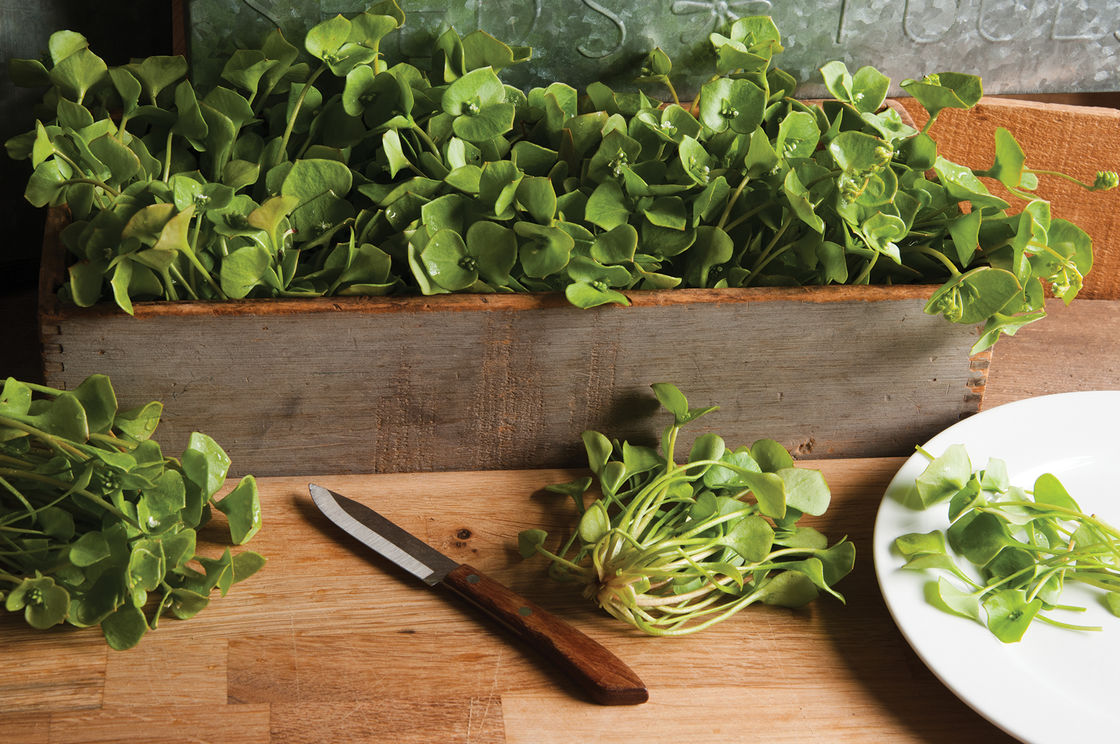Managing diseases in microgreens
Prevent diseases such as Pythium, Phytophthora and mildew in microgreens by obtaining quality seed and sterilizing it.
Mighty microgreens
Microgreens are edible seedlings grown to the first true leaf stage, according to Zachary Grant, extension educator, Local Food Systems and Small Farms, University of Illinois Extension. Microgreens have been popular with growers and consumers for a number of years now. Demand for microgreens has increased since being identified as a national trend in haute cuisine around 2006, according to Cheryl Kaiser and Matt Ernst from the University of Kentucky’s College of Agriculture, Food and Environment.
Health-conscious consumers and restaurant chefs are drawn to microgreens, which contain phytonutrients and plant metabolites, Grant says. They’re added to soups, salads, garnishes and smoothies and served at home and in restaurants. Because they have such a short shelf life, they’re typically not grown on a large scale and shipped for miles and miles like tomatoes, but rather sold directly to local markets, presenting an opportunity for smaller growers.
Because they are considered easy to grow by some and have such a short growth cycle, they can be grown between crops in a greenhouse. They can also be grown year-round in greenhouses and cold frames in warmer climates. Profit margins are fairly high as well. An ounce of microgreens costs about 25 cents to produce and sells for about a dollar per ounce at Whole Foods. Growers can expect to gross about $25 per square foot of microgreens, Grant says.

Pest and disease management
The most serious threat to microgreens appears to be Pythium and Phytophthora.
“Damping off can definitely be a problem with microgreens,” Grant says. “But that can be a result of two cultural factors: too dense of seed spacing in flats and zero air circulation.
Rob Jennings, president and CEO of Bella Verdi Farms in Dripping Springs, Texas, echoes Grant’s sentiment. Jennings says the best practices growers can take to prevent disease are to pay close attention to temperature, humidity, growing medium selection and spacing. Because there is such a short growing cycle with microgreens, the seedlings themselves aren’t treated with any type of pesticide.
“We grow our microgreens without using soil. Consequently, we may not see diseases that other growers are faced with,” says Jennings, whose company is a leader in hydroponic growing. “In our experience, most varieties of microgreens are not in the system long enough to suffer from disease.”
Some varieties of microgreens are more susceptible to disease and insect problems than others. “The varieties that come to mind based on past experience are watercress, Swiss chard, Thai basil, mint and nasturtium,” Jennings says. “There may be others, but those are the ones we have tried over the years and have had disease and pest challenges with.” He says problems with pests such as aphids and whiteflies are more common than diseases.
The other disease factor worth noting comes from the seed itself. Seeds can be subject to mildew, so Grant says it’s advisable to sterilize the seed.
Using commercial and kitchen-formulated solutions on seeds will prevent mildew, but may also prevent pathogens that can affect the greens themselves.

Commercial treatments include peroxyacetic acid formulations, familiar with microgreen growers, including Tsunami 100. A “poor man’s solution” is to mix 4 teaspoons of white vinegar and 4 teaspoons of food-grade hydrogen peroxide with 1 quart of water. Seeds can be soaked in this solution for 10 minutes. This is a solution Curtis Stone, popular microgreen grower and author of “The Urban Farmer,” uses in his commercial microgreen operation.
Larger seeds like peas can benefit from an additional 8-hour soak in clean water to help initiate germination, according to Grant. Smaller seeds could also be soaked as a preventive measure, but for a much shorter period of time.
The first line of prevention is to obtain good-quality microgreen seed, Grant says. He says some popular seed companies test their microgreen seed for fecal contamination.
“If I was a commercial grower, I would test my seeds ahead of time to reduce the risk of disease,” Grant says. “But whether you test or not, treat the seed ahead of time, or inquire about seed lot testing from the seed company to reduce the risk of disease and reduce the risk of some of these potential public organisms. Not all growers do it. I would do it for a little peace of mind.”
Microgreens are grown in peat-based soilless medium and hydroponically, about a 50-50 split, Grant says.

“Large commercial urban growers seem to do it more hydroponically,” he says. “If you have a larger automated greenhouse you’re probably doing it hydroponically.” He adds that the soil-less media-based growers would more likely be small, direct-market farms of zero to five acres.
Good sanitation, a sterile medium and a clean source of water will go a long way in preventing a lot of the disease problems mentioned above. Grant discourages the use of untreated surface water from ponds and other sources for watering microgreens because from a contamination standpoint, it is the riskiest.
If you take the advice of these experts, you’ll increase your chances of winning the race with microgreens.
Youtube та Підписуйтесь!



